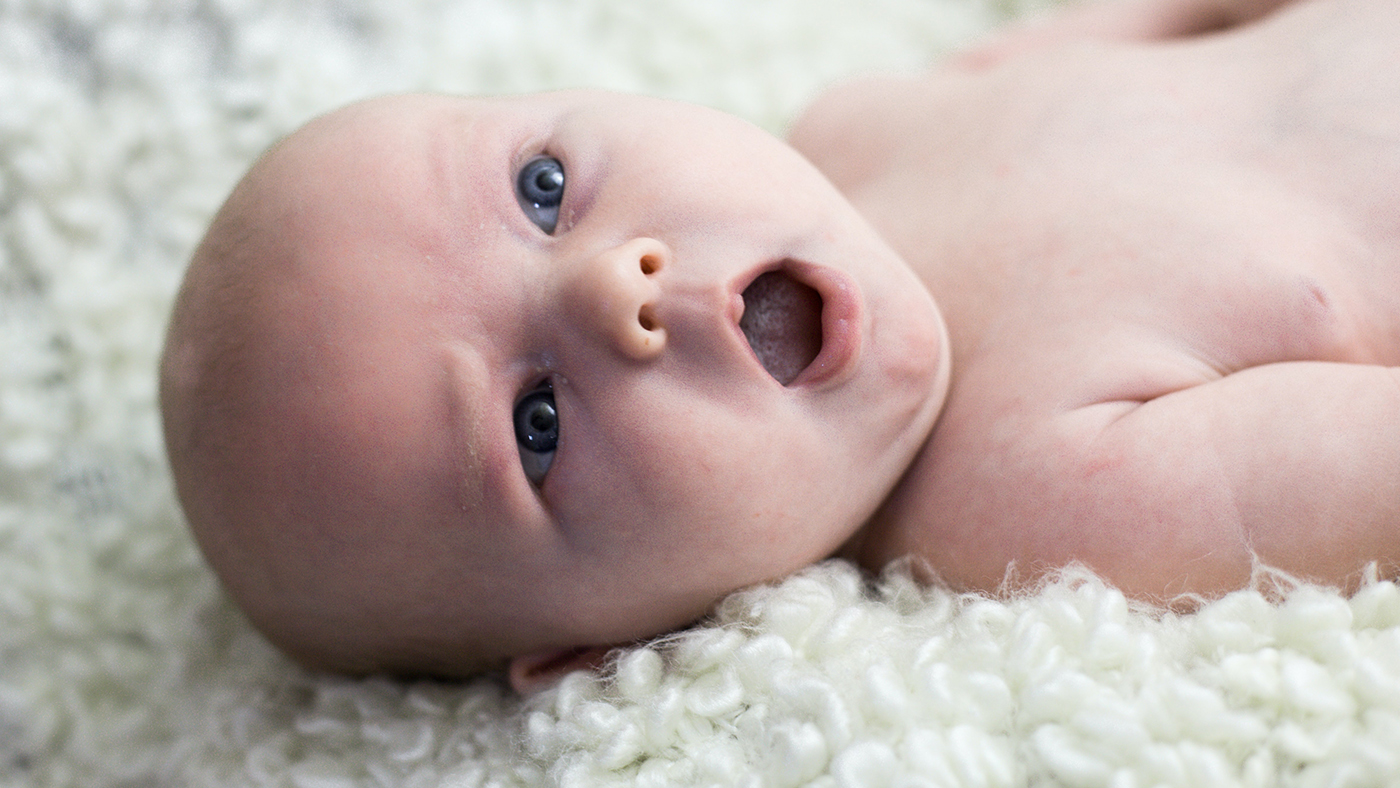Ooh, ahh... what your baby's cooing may sound like

Your baby will have been listening to people talking since before they were born and might have started to make some sounds when they were comfortable and content. As their control of their mouth and tongue develops they will start to make some different sounds, moving their mouth, lips and tongue in different ways to explore the sounds that they can make.
Cooing is your baby experimenting with their mouth, tongue and breath
The first sounds that you will notice your baby making are cooing sounds; you'll hear these soft vowel-like sounds, such as, ‘oo’ and ‘aah’.[1] It is thought that these first sounds emerge from your baby's playful exploration of the movement of their mouth and control of sound. Your baby moves their mouth and tongue and explores controlling their breath to make sounds, just as they explore movement of their arms, legs and hands to develop control and awareness.[2]
Listening to you and others around them will develop these initial sounds
Your baby might explore the sounds that they can make when they are lying awake and content but they will develop their understanding of language and interaction through listening to you and other people and in social situations. When you respond to the sounds that your baby makes with more speech and pauses so that they can talk a turn in conversation, they will realise that they can use speech to communicate.
Attracting your attention and making connections with people
The development of speech and language links closely with social and emotional development. Your baby will be learning different ways to attract your attention and to interact with you and other people as they seek to make connections and learn how to build relationships.
The sequence of sounds that babies appear to share: reflexive, speech-like and syllables
There are variations between individual babies and the first sounds that they make, but researchers suggest that there are similarities in terms of the sequence of sounds with researchers finding similarities when listening to babies around the world.[3]
- At first, you will probably hear your baby's reflexive sounds, such as coughs, cries and burps, as they develop control of their mouth and tongue.
- Then they will begin to make sounds that are more speech-like, including some vowel-like sounds.
- Next will come babbling and their exploration of syllables and different sounds. Gradually the sounds that they make will replicate those that they hear in the languages spoken around them.
Raspberries on the horizon?!
Your baby will continue to explore making sounds in different ways – they might blow raspberries and bubbles as well as making sounds that sound a little more like speech. They will continue to listen to the voices around them and in doing so learn more about the sounds that they will need to use when they speak, and will gradually begin to link words with particular people, objects and feelings.
References:
[1] Crowley, K. (2017) Child Development. A Practical Introduction (2nd edn). London: Sage.
[2] Moulin-Frier, C., Nguyen, S. M., & Oudeyer, P. Y. (2014). Self-organization of early vocal development in infants and machines: the role of intrinsic motivation. Frontiers in psychology, 4, 1006. https://doi.org/10.3389/fpsyg.2013.01006
[3] Oller, D. K. (2000). The Emergence of the Speech Capacity. Mahwah, NJ: Lawrence Erlbaum Associates.